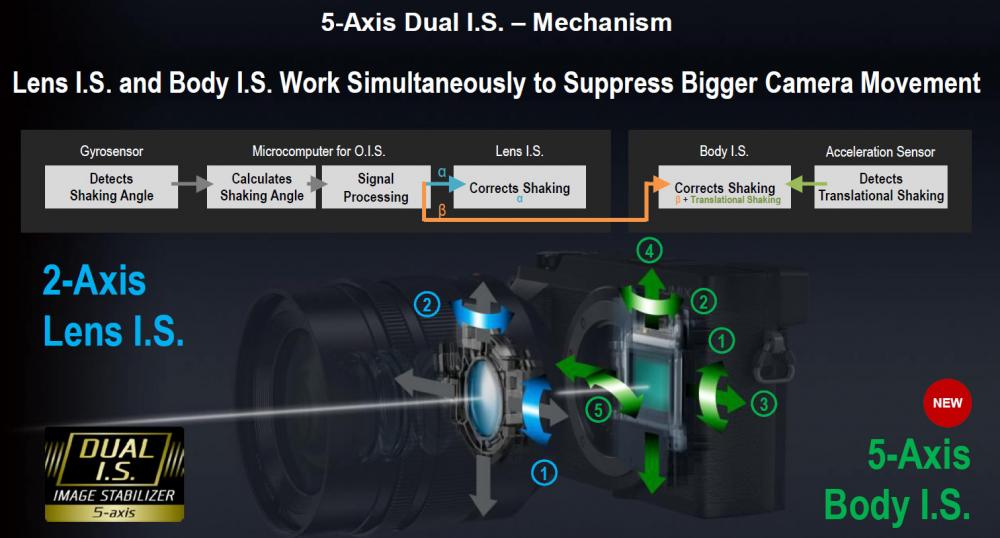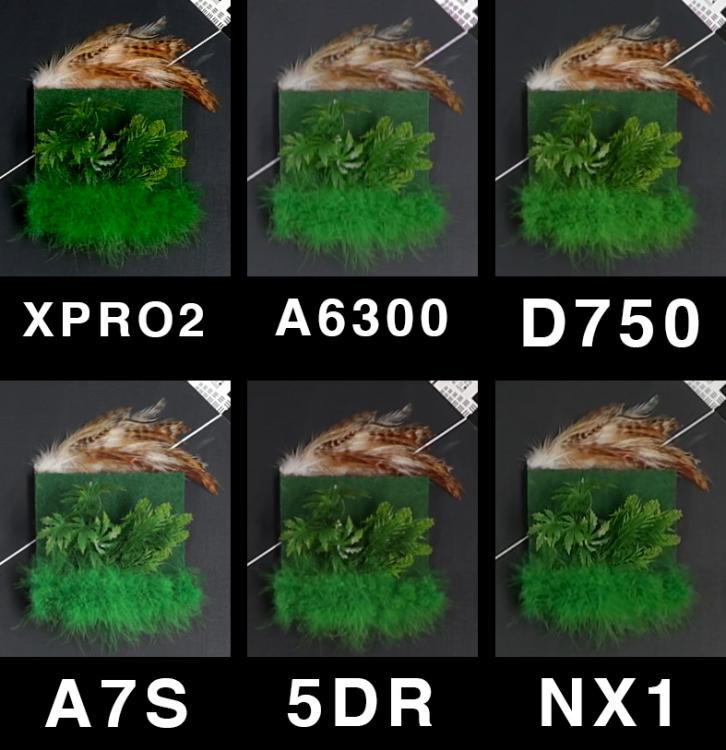Leaderboard
Popular Content
Showing content with the highest reputation on 04/13/2016 in all areas
-
Exploring "ST" command
Kisaha and 2 others reacted to MountneerMan for a topic
Yeah I was wondering about that myself. I am also curious about the following commands as well startfisheye stopfisheye setpath 0 - 2(0:OTF/1:IPCout/2:RawOut/3:Ldc Out/4:120FPS OTF/5:120FPS IPC out stremmode [0 – 14] sensorframerate 240 outputframerate 240 dataframerate 240 Hopefully I will have some time to play around with it this sunday.3 points -
Need some advice on Mamiya(or other) MF lenses on Nikon mount
Geoff CB and 2 others reacted to Bioskop.Inc for a topic
Stick to Nikon ai-s - lovely lenses. Here's some useful links, that really helped me out when choosing which lenses to buy (the first link has spot on evaluations, the second is just serial numbers/dates): http://www.naturfotograf.com/lens_surv.html#rating http://www.photosynthesis.co.nz/nikon/serialno.html#353 points -
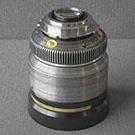
Cutting Diopters?
Zach Goodwin and 2 others reacted to richg101 for a topic
remove from the metal housing and wrap the element in masking tape draw a line down the middle drill lots of holes along the line using a glass/ceramic drill bit - like an arrow head shaped drill bit - make sure the elements are in a shallow pool of water to aid cooling/lubrication during drilling. don;t apply pressure - let the drill do the work. high speed, use a battery powered drill for safety - 230volts and water don't go! using a tile cutting fret saw slowly cut along the line - the drilled holes will mean you have less material to physically cut through using very high quality 'wet and dry' glass paper from 240 grit down to around 1000grit to grind the edge flat. the courser the paper, the more likely you are of chipping the edge so go steady when using he course grades. grind 'edge ways' not 'across' to avoid chipping once flat, apply a very fine chamfer to the cut edge using 1000 grit wet so remove any tiny chips. thin down some enamel matte black paint and apply to the ground edge - thinning will mean the paint natirally absorbs into the frosted ground edge dry in oven for an hour at 90degrees since the cheaper single element diopters from vivitar are crown glass they are less prone to chipping start on the diopter you;re less likely to actually use so you can practice. DO NOT attempt this with cemented doublets! you'll think you;re doing really well, then when that drill bit gets through the first layer and hits the second it'll shatter.3 points -
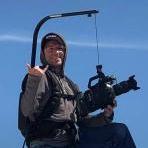
I'll be at NAB, what would you like me to check out?
Marco Bentz and 2 others reacted to Geoff CB for a topic
Kinefinity: I understand why you are adding ProRes, but why did you drop cineform? It is the codec that I prefer.3 points -

Sony a6300 vs Panasonic gh4
Xavier Plagaro Mussard and 2 others reacted to funkyou86 for a topic
This was mine dilemma as well, but I ended up with GH4, because I really needed a better camera performance for a project than my t3i's. We'll see what the GH5 can do, but to be honest, the GH4 performance is solid, the 100/200mbit codec is great, the 4K's nice, anamorphic shooting is now a thing, the battery last long enough and there is no overheating. Yep, there are downsides as well, but you'll always have to sacrifice some specs. So far, so good, I'm hyped for the GH5, but I'm really fine with the GH4's performance.3 points -
If I had a pound for every time I'd read "wait" and "Black Magic" together in the same thread, I could buy and Alexa 65.3 points
-

Panasonic GX80 - 5 Axis IBIS works on video!
Nathan Gabriel and one other reacted to sanveer for a topic
Andrew, there is some Glitch wrt to Uploading Pics from a Smartphone. I had to use a laptop, just to be able to Upload this Pic. Anyway, I don't know why people continue to create confusion, when everything is outlined so clearly. Please read and watch everything, and stop misinterpreting things. And, thanks ntblowz2 points -
Imagine you have a card that is a theoritical perfect white. Any visible wavelength which strikes the card is reflected, none are absorbed. The sunshine has only a few wavelengths missing or reduced, so let's say photons with wavelengths R-O-Y-G-B-I-V (Red, Orange, Yellow, Green, Blue, Indigo & Violet) leave the sun. They then strike our atmosphere. As we know, by looking, the atmosphere scatters blue more than red, but at noon, the sun passes relatively little atmosphere before hitting your eyes, so at noon, the full compliment of ROYGBIV hits your card and bounces into your camera Now, it's nighttime. Very little light from the sun is around, so you switch on your lights at home. These lights are incandescent, or maybe an energy saver bulb made to replicate the yellow light incandecsents produce .The light is giving out red, orange, yellow and green in equal proportions to the sun, but it isn't producing as much blue, indigo and violet. Thus we can write that it gives out ROYGbiv. You bring your theoretical card indoors, turn on the lights and it reflects ROYGbiv. Less of the "cooler colours". You look at the card. Our brains are very clever, it automatically balances the picture, you know the card is supposed to be white, so your brain makes it white. Out of the corner of your eye, you see someone walk past your window. They look blue, the whole world looks blue, an anonamly of this automatic white balance. We point the camera at our card. Our camera is in manual mode and is not so clever, it sees, bouncing off the card ROYGbiv. If you had put a yellow card in front of it in the noon sun, it would have also seen ROYGbiv bouncing from it. As our camera is in manual mode, it does not understand the context of the picture. It has no cultural reference or memory of this card being white, it displays it as yellow because it sees less biv and more ROYG. Fortunately, our camera has an adjustment, so we can set a temperature. Skip the part where the scale we use is derived from black body radiation, just know, we can set our camera to be more sensitive to blue or red, and we tell it how sensitive to be to either with a scale measured in kelvin. We know our indoors light is producing a temperature of 2800K, so when we set our camera to that, our white card looks white again. However, when we take it back out into the noon sun the next day, our camera setting is telling it to be especially sensitive to blues (because our bulb was producing few blues), so our image looks blue. We dial it back up to 5600K and at this point, it is balancing the sensitivity of blues and reds equally. The image looks correct again. ----- I know you know most of that, but it's important to understand that the reality is, there are wavelengths of light missing, our brains compensate for that but the sensor of the camers shows what is really there. When this gets passed to the processors for processing, a white balances is applied, this is part and parcel of turning electronic voltages into colours. When you look at the screen on the camera, your white balanced eye sees the output of the monitor, and your brain is both clever enough to not confuse what you see on screen with the real object and stupid enough to try to WB to that in the section of your vision that the screen occupies. Badly. Also, the screen being yet another light source with it's own colour temperature just adds to the brains problems. As you have noticed, this is not reliable and, if you spend a long time looking through a viewfinder, the output of that eye is adjusted to compensate, similarly, if you ask people who have watched a movie with a strong colour cast throughout, they often didn't notice it because their eyes adjusted after a few minutes. That doesn't mean that you will be able to balance them to each other though - theoretically yes, if you can hold attention rigidly on both objects simultaneously without anything else moving in your field of view, but the reality is, this is an impossible thing to work towards. Basically, don't trust what you see, your brain is working against you by trying to work for you! As for the best method, well, the most accurate is to have a good lightmeter and a grey card, and use it religiously, every shot. The most convienient is to stick it in auto wb. You can greycard your camera and use it's inbuilt metering system, you can adjust the WB only when the lighting changes drastically. I expect there are more methods, these are the ones that work for me, depending on how important quality is, how quick I need to be etc. And, yes, the whole point of a grey card is to give your camera a surface with no colouration of it's own to bounce every wavelength accurately to be metered - it's trying to be our theoretically perfect card. They can be suprisingly expensive, but as we've learnt, we can't trust our eyes when they tell us that the piece of paper we are using is white - it may be slightly yellow, it may be slightly blue, even if we see it as the purest white and that's going to screw us over by a couple of hundred K. Don't try to go for reality either, for starters, actual reality looks terrible and none of us can see it, secondly, we all develop our internal WB differently, with variation depending on our genes and our upbringing, and reality for us changes constantly over time as well as our brain constantly adjusts. Go for what looks good to you on the day.2 points
-
Interstellar and The Dark Knight Rises are two obvious modern examples....there have been many over the years where 'traditional' scope formats have been intercut with Imax material , or simply for use as a creative device in the narrative. To minimise Aspect 'jump' - many home video transfers slowly expand the black bars out to reveal a 'taller' (often center cropped) aspect. (for when film is conformed for 16:9 being fullest image area to showcase letterboxed and 'square' Imax or 4:3 archieval format material You'd probably be able to outfit that Inspire 1 with a small focus-through 1.5x or 1.33x anamorphic, and get some pretty good results...if I had a drone, it would be the first thing I'd do2 points
-
For people hoping that NX500 and NX1 have the same hardware, bad news, documented here https://github.com/ottokiksmaler/nx500_nx1_modding/blob/master/doc/NX1_NX500_hw_differences.md TLDR - NX1 has more ove everything.2 points
-

Exploring "ST" command
iamoui and one other reacted to Pavel Mašek for a topic
Any idea what can be "nrmenable 0 - 1 (0:off/1:on)"? Noise reduction in movie mode? :-)2 points -
On the other side you can t push a7s footage that far without having artifacts.(and I m not talking about greenscreen work). You tend to get a lot of red color noise in the shadow with a a7s when you push a bit , and even neat video have trouble getting ride of it I just sold mine to get the Terra , even with a shogun ,8 bits is still 8 bits, and the colors, even if better than a GH4, are still far from any recent cinema camera (I m a VFX artist/colourist btw). I m not saying that the terra will be mind blowing as there is no footage out yet , but from what I saw the kinefinity colors science is definitely not con/pro-sumer grade .2 points
-
I'll be at NAB, what would you like me to check out?
DayRaven and one other reacted to photographer-at-large for a topic
2 points -

Need some advice on Mamiya(or other) MF lenses on Nikon mount
Bioskop.Inc and one other reacted to Geoff CB for a topic
Nikkor, I own the Mir 24n 35mm. It's an excellent lens for video, very creamy look and long smooth focus ring. Also like Bioskop.Inc states it focuses so close it is practically a macro. If your looking for something in the Zeiss league you should look into the voigtlander lenses, I own the the 28mm, 40mm, and 90mm and they are all very sharp with great colors and rendering and small. I have a D750, i'll throw up a Mir 24n test with in up in the next couple of days.2 points -

Should I wait for a blackmagic price Cut this summer?
muhammadahmad and one other reacted to richg101 for a topic
@jgharding would have raised so much money he'd be able to bribe the head of business planning of Arri to sell him one.2 points -
Flolight Bladelight
Phil A reacted to Pyriphlegethon for a topic
Has anyone else here had experience with Flolight's Bladelight? I have spent some time with it during a couple shoots now and been quite impressed. Color rendering is good and form factor is pretty unique. The flat panels have their place I suppose, but, after purchasing several a few years ago, have rarely actually used them. They seem like the type of thing I most often see used atop a camera hotshoe from the guys who bring their cameras to document NAB I wrote up a fairly long review of sorts here if you're interested in the Bladelight. A field-power option would be nice, but, at least the one I have, is only AC power.1 point -

Canon 18-80mm f4
BenEricson reacted to TheRenaissanceMan for a topic
Seems cool if you need a workhorse servo zoom for your C100(ii)/C300(ii), but probably not of interest to a lot of us.1 point -

Kinefinity 2016 Nian new product launches
Geoff CB reacted to TheRenaissanceMan for a topic
$3500 with High Speed, 4K, SDI, and Wi-Fi control. Plus you need SSDs, monitoring, and sound. Still, hell of a deal considering its capabilities.1 point -
1 point
-

I'll be at NAB, what would you like me to check out?
Jonesy Jones reacted to Zach Ashcraft for a topic
Please invade the Canon booth in full SWAT gear and demand a 5d mark IV release.1 point -
Who needs a prototype. it's a c100mk2 without recording or monitoring. They've told us that. We know the size. Logic tells us everything we need to know.1 point
-
So who uses noise reduction?
Inazuma reacted to Mattias Burling for a topic
Thats why I said "might", but your right. My apology1 point -
Thank you very much for your post, DayRaven. I really appreciate your time and helpful input. I like your ROYGBIV example. So to conclude I would say: - I shouldn't (always) believe my eyes, because brains take into account multiple light sources (screen - scene - ...) in one scene and correct them all, differently for each object. - thus the 'color matching' method I used is complete nonsense and I should not use it anymore (or at least think twice before using it). - it's not a big problem when my wb isn't 100% perfect, I should just go for a good look in post.1 point
-
Zacuto shrink the EVF - Gratical Eye available soon for $1950
BrorSvensson reacted to Mattias Burling for a topic
There is one in this,1 point -

Zacuto shrink the EVF - Gratical Eye available soon for $1950
DayRaven reacted to Andrew Reid for a topic
That is 2700dpi on a panel that size dude. Why would you need more?1 point -

Kinefinity 2016 Nian new product launches
Jonesy Jones reacted to IronFilm for a topic
They do have "sports mode" which massively reduces rolling shutter. Also the new 5K sensor will have a global shutter1 point -
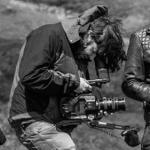
I'll be at NAB, what would you like me to check out?
Jonesy Jones reacted to Oliver Daniel for a topic
Cheers, good luck with the trip! Looking forward to seeing what the Terra is all about.1 point -

Zacuto shrink the EVF - Gratical Eye available soon for $1950
Ivanhurba reacted to Oliver Daniel for a topic
For me, the power features ruin the potential of this product. Doesn't make sense to have a micro type product, which you have to put on a rig to power up. Might as well have one of the larger ones off a different brand for less money.1 point -

Examples of Anamorphic ratios contrasted with 16:9?
Tito Ferradans reacted to Bold for a topic
This video cites several films which switch (or otherwise play with) aspect ratios.1 point -
Zacuto shrink the EVF - Gratical Eye available soon for $1950
Marco Tecno reacted to Eno for a topic
Don't confuse mega Pixels with mega Dots (R, G and B sub pixels). This screen has 5 Mdots or 1,66 Mpixels and the Leica has 4,4 Mdots or 1,46 Mpixels effective resolution!1 point -
All Samsung Lenses are discontinued
Geoff CB reacted to Mattias Burling for a topic
It is not possible.1 point -
Sony a6300 vs Panasonic gh4
Eduardo Granadsztejn reacted to tweak for a topic
If you want to shoot moving things outside (in the heat) then I wouldn't recommend a6300. GH4 is the most versatile 4K shooter with options, but as others have said G7 may also fill your needs and costs even less. I'm also waiting to see what GH5 has instore.1 point -

I'll be at NAB, what would you like me to check out?
IronFilm reacted to AaronChicago for a topic
Not saying that it will over take normal film making, but I think it'll help you get extra jobs over someone else if you know how to edit or shoot VR. It's getting pretty competitive out there and utilizing new tech helps to give an advantage. With that being said, if it's not something you enjoy then it's not worth it. No reason to get into new tech if it's something you'll hate doing every week.1 point -
I still don't understand WB!
Geoff CB reacted to Mattias Burling for a topic
Your EVF is a screen afterwards, thats what an EVF does, its just a screen showing the video you are about to record. Its not an eye and its not meant to match what your eye sees. Its made to show what the camera sees.1 point -
I'll be at NAB, what would you like me to check out?
Jonesy Jones reacted to photographer-at-large for a topic
Zoom, and Letus Helix, please.1 point -
Just purchased the Pro version of Resolve from a fellow board member. Haven't heard how it handles the NX1 files, we'll see if it works better with 0-255.1 point
-

I'll be at NAB, what would you like me to check out?
Jonesy Jones reacted to TheRenaissanceMan for a topic
SLR Magic, please! See if you can pin them down on a release date for the rest of their PL APO prime set.1 point -

I'll be at NAB, what would you like me to check out?
Jonesy Jones reacted to DayRaven for a topic
Edelkrone? Just to get a feel for their products, they look excellent but get mixed reviews. They have 5 new products to unveil as well.1 point -
Need some advice on Mamiya(or other) MF lenses on Nikon mount
sudopera reacted to Bioskop.Inc for a topic
I use the Mir-24 (35mm f2) a lot for video work & it is good - probably the best Russain lens that i've used (I just use Russain lenses or Nikon ai-s). It comes in Nikon or M42 mount (i've got the M42 version) - the different mounts have different bodies & the Nikon version apparently has more/better MC. However, I don't really think that its in the same league as a Leica, but then what lens is - it is as good/better than the Nikon 35mm f2. Very good lens, focuses very close (almost macro) & cheap for the Nikon mount version - quality control with Russain lenses can vary.1 point -
Pistol grip 3-axis gimbal stabilizer
Fredrik Lyhne reacted to sgreszcz for a topic
I just ended up selling my (unused) Beholder DS1 on Ebay. After joining the Beholder Facebook group, I realised that all the necessary tweaking wasn't for me due to lack of time and it is also one more thing to carry around. I think I'll rely on my E-M5II (and maybe the new Gx80) for stabilisation for now and look at the DJI Osmo if I need something for more dynamic movement.1 point -
What is your recipe for GH4/G7 anamorphic?
Byron Yang reacted to tweak for a topic
The slower FDs really work well.1 point -
Perfect "pro enthusiasts" camera - hope blackmagic sees this topic
jpb reacted to Jim Giberti for a topic
This has all been conveyed to BM directy and indirectly many times. What they do or don't do..... I'm not sure what you mean by "again" regarding Sony. They're very diffferent cameras and companies in about every way, and if IQ is your concern then there isn't any way Sony is going to be stealing any thunder from them. If affordable, feature packed cameras are your desire then Sony will release another three or four of those before I finish typing this.1 point -

Kinefinity 2016 Nian new product launches
sudopera reacted to Oliver Daniel for a topic
Found something decent shot on the Kinemini 4k - nice and organic looking. Also love the use of lenses in this short. https://vimeo.com/1599821741 point -
Obviously too heavy, but it should meet your CA and sharpness requirements: Sigma 18-35 with both a dumb adapter and focal reducing adapter. On a BMPCC that gives you a range of 32-106mm f1.0-1.8. If you're on m43, pretty hard to beat. The hyperprimes from slrmagic are also awesome, but much pricier and their housing differs from lens to lens. The art zoom is a rig up once affair that can be get any shot wide to portrait. I'm in love with this lens. And after renting a Zeiss Otus set in EF, I'm still convinced the Sigma is an amazing choice.1 point
-
Oh, wait a minute, I'm getting something through... I see... a shape... it's in the sky... no wait... it belongs on the sky but isn't... it's a STAR... Let me get a clearer picture... "Please insert another 50 ct" <inserts coin> Ah yes! The star isn't in the sky... it's on a tile on the floor... I think it must be the Hollywood Walk of Fame. Zach, as this is happening in the future, this must mean that you... you... I see you playing tourist in LA. Get some napkins too. You're gonna spill some icecream on the Walk. Zoltar thanks you and wishes you a prosperous future!1 point
-

Set of lenses - Nikon D, Canon FD, Minolta or others?
kidzrevil reacted to Don Kotlos for a topic
What is the camera that these are going to be used on? Also how large aperture do you want? If you only care about MF then Zeiss milvus (21,35,50,85) will best fit your criteria. These will also keep their value and probably you won't have to buy these focal lengths again.. Otherwise Sigma ART can give you very very good quality, bright & AF (but no 85mm yet). If your mount is Sony FE , then the new sigma adapter can give very nice AF.1 point -
I see... yes... something's going to happen in the future...1 point
-
So who uses noise reduction?
markr041 reacted to Mattias Burling for a topic
Please feel free to point out the part in my post where I was unclear about messing with you. You said for Youtube its fine but "High End" needed NR. I then said that I didnt use NR for TV either. Meaning, no its not only on youtube that NR isnt used. You then quickly pointed out that it wasnt High End. It just sounded funny to me thats all. We all know that there are many shows, commercials, events and movies on TV that are way way more "High End" than many Hollywood films. And we all know that there is also simple things like news. So that you felth the need to point that out was funny And the whole NR for "High End" still sounds weird to me. Can you give a few examples of what is "High End". I took GT as an example. No I havent worked there. Dont even watch it, think it sucks. But I have worked on productions with more money involved and way way more viewers. But it wasnt high end and we didnt use Noise Reduction Why you feel the need to tell me about lights being taken out is also wierd. Thats photography 1:1. I think, you wrote a post that made you sound a bit elitist and instead of writing "that came out wrong" you kept going. But thats just my theory1 point -
I don't agree with the people saying Fuji's colour is anything less than stunning. In video mode the XPro 2 can compete with all of the below cameras for resolution and detail in 1080p, whilst giving far more pleasing colour and variation in tone out of the box. All shot on standard profiles. The others look like they have a veil over them. If it looks too dark or crushed then it's your monitor that needs adjusting not the Fujifilm film simulation. Also for stills I'd rather use the XPro 2 than any of the above. It's far more Leica-like and enjoyable during a shoot.1 point
-
So who uses noise reduction?
TheRenaissanceMan reacted to mercer for a topic
Stop shooting with ISO 6500 on a t2i and you won't need noise reduction. ?1 point



